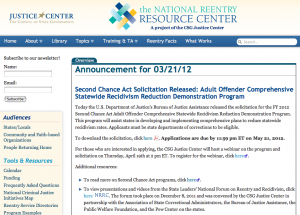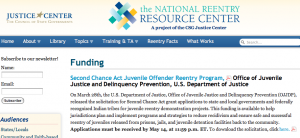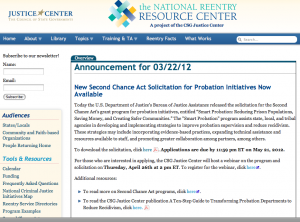Feb. 21st
Though many disputed the idea that federal funding for Reentry Court would survive the President’s initial 2012 budget, there it is; $5 million for Reentry Courtsin the Department of Justice’s “Second Chance Act”. Though, in the scheme of things, not a lot of money ( and half of the $10 million allocated last year), it will continue funding of existing Reentry Court programs, and allow the expansion of Reentry Courts in exciting new ways. Most importantly, it is a statement that the Administration has not given up on Reentry courts as a model for prisoners returning to their communities.
It should be noted that there are literally dozens of states that are flailing around looking for some strategy that will allow substantial reductions in their prison populations. Reentry Courts, working with other important institutional and community partners, provides the focus necessary to integrate offenders back into the community while controlling their criminal conduct. However, its important to note that reentry is a statewide problem, and cannot be addressed by local communities without the leadership, resources and committment of state political, judicial, and criminal justice officials. Any new federal Reentry Grant Program needs to be aimed at state government, rather than individual localities.
While it’s true that the pilot programs that are underway in a dozen states have not been around long enough to prove their effectiveness, drug courts have proven the effectiveness of the model in working with high-risk offenders (making up the great majority of those returning from prison). Where Reentry and other Problem-Solving Courts have missed their mark, is that they have not embraced evidence-based practices that have been developed through nation-wide meta-analysis based research.
As a Reentry Court judge, I am constantly reminded of the advances made in our knowledge, capabilities, and technology over the past ten years. It literally puts us on the brink of extraordinary change in the criminal justice system. All it takes is the willingness to break from the conventional, and the committment to apply what we know works (based on state of the art research) to our reentry populations. It can be done and the ride will be exhilarating.
[More on those advances next week]





